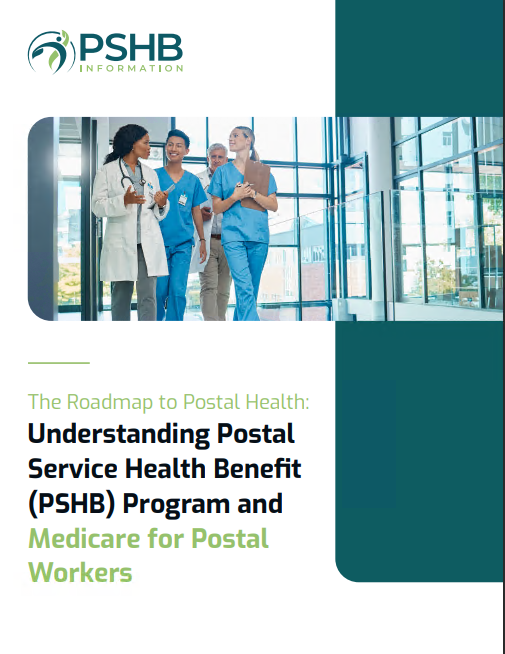Key Takeaways
- Postal employees transitioning from FEHB to PSHB should understand the key differences in coverage costs and eligibility requirements.
- It’s important to evaluate factors such as retirement health benefits and cost changes before making any decisions about health coverage.
How Does PSHB Stack Up Against FEHB? What Postal Employees Should Know About Health Coverage Costs
Postal workers have long relied on the Federal Employees Health Benefits (FEHB) Program to meet their healthcare needs, but the recent introduction of the Postal Service Health Benefits (PSHB) Program has stirred up plenty of questions. With the PSHB becoming available to current postal employees and retirees, understanding how these two plans compare in terms of costs, coverage, and overall benefits is crucial.
The decision between PSHB and FEHB isn’t just a matter of switching plans—it’s about determining which option provides the best protection and value for you and your family. Both programs offer health insurance, but how they structure their premiums, deductibles, and out-of-pocket expenses can vary significantly. This guide will walk you through the major considerations postal employees should be aware of when choosing between these two health insurance options.
What Is PSHB, and How Is It Different?
The Postal Service Health Benefits (PSHB) Program was created specifically for postal employees and retirees. As of January 2025, postal workers will no longer be able to participate in the FEHB program, as they will be automatically enrolled in PSHB unless they opt for another qualifying health plan.
While PSHB offers many of the same benefits as FEHB, it is tailored more closely to the needs of postal workers. One of the biggest distinctions is the cost structure. PSHB aims to reduce the financial burden for postal employees by addressing the unique requirements of their workforce. Although similar in many ways, the long-term affordability of each plan depends on the specific needs of the employee and their family members.
Coverage Costs: What to Expect with PSHB vs. FEHB
When it comes to health coverage, the cost is a major concern for many postal employees. Both FEHB and PSHB require employees to contribute to their premiums, but the exact amount can differ. FEHB premiums tend to fluctuate based on government negotiations and the various options available. On the other hand, PSHB has been designed to keep costs more consistent across the board for postal employees.
While specific details about PSHB’s premium costs are still emerging, early projections suggest that PSHB might have a more predictable pricing structure compared to FEHB. Employees will likely see some changes in how much they pay out-of-pocket, especially when it comes to co-pays and deductibles. Retirees transitioning into PSHB may also face changes in their contribution amounts. To plan accordingly, postal workers should be mindful of any updates to premium rates as the enrollment date approaches.
Medicare and PSHB: A Key Factor for Retirees
One of the most important elements that postal employees—especially retirees—must consider is how Medicare interacts with their health coverage. Under the PSHB program, Medicare Part B enrollment becomes a requirement for most retirees. This is a significant departure from the FEHB program, where Medicare enrollment has been optional for retirees.
For those approaching retirement or already retired, the cost implications of enrolling in Medicare Part B, alongside PSHB coverage, should not be overlooked. Medicare Part B carries its own premiums, which retirees must factor into their overall healthcare costs. However, for many, the combined benefits of PSHB and Medicare may lead to lower overall out-of-pocket expenses, particularly for medical services not fully covered under one plan alone.
The Transition Period: What Postal Employees Should Know
The switch from FEHB to PSHB will happen automatically for most postal employees, but that doesn’t mean there aren’t important decisions to be made. Employees and retirees will need to carefully evaluate their options during the open enrollment period in late 2024. During this time, they’ll have the opportunity to review plan details, compare premiums, and decide whether they want to make any changes to their health coverage.
One key factor to keep in mind is that once the transition to PSHB is complete, postal workers will no longer have access to FEHB plans. For those happy with their current coverage under FEHB, this may feel like a significant change. However, PSHB was created to provide postal employees with comparable, if not better, options for healthcare, so most workers can expect continuity in their care.
FEHB’s Legacy: Why Postal Workers Trusted It
For years, the FEHB program has been a staple of federal employee health coverage. It offers a wide range of plans, allowing federal workers to choose from various options based on their healthcare needs and budget. The program’s flexibility has been a big selling point for postal employees, giving them the ability to select plans that align with their personal and family health requirements.
FEHB’s strength lies in its variety. Employees could pick from different levels of coverage, whether they needed a low-cost plan for basic medical care or a comprehensive plan that covered more extensive treatments. Postal workers have come to trust this flexibility, and many have grown accustomed to the level of service and coverage they received through FEHB.
Retirement Health Benefits: PSHB vs. FEHB
For postal workers planning their retirement, healthcare is often one of the biggest concerns. Under FEHB, retirees could continue their health coverage without making significant changes, provided they met certain requirements. With PSHB, the structure of retirement health benefits will change slightly.
Retirees currently enrolled in FEHB will be moved to PSHB, and as mentioned earlier, most will be required to enroll in Medicare Part B. This shift could mean higher costs for those who haven’t planned for the additional Medicare premiums. On the upside, retirees who have Medicare and PSHB could see enhanced coverage, with fewer gaps in their health insurance.
It’s crucial for retirees and those nearing retirement to assess their financial situation before the transition. Understanding how the additional Medicare Part B premium fits into their retirement budget will be essential to maintaining affordable healthcare.
Choosing Between PSHB and FEHB: What Should Postal Employees Consider?
When deciding between PSHB and FEHB, it’s essential to weigh the pros and cons of each program based on your personal needs. Here are some key factors to consider:
-
Premium Costs: Compare the projected premiums for PSHB with what you’re currently paying under FEHB. Keep in mind that while PSHB aims to provide consistent pricing, FEHB premiums can vary based on market conditions.
-
Out-of-Pocket Expenses: Both plans have out-of-pocket costs, but these can differ in terms of co-pays, deductibles, and covered services. Be sure to review these details carefully to determine which option aligns best with your financial situation.
-
Retirement Planning: If you’re nearing retirement, consider how the requirement to enroll in Medicare Part B with PSHB might affect your healthcare budget. For some retirees, this could lead to additional costs.
-
Family Coverage: If you’re covering a spouse or dependents under your plan, ensure that PSHB offers similar family coverage options as FEHB. For most postal workers, PSHB is expected to provide comparable family benefits, but it’s always worth confirming.
Making the Right Choice for Your Health Coverage
Deciding between PSHB and FEHB isn’t just about the costs—it’s about securing the right healthcare for you and your family. By staying informed and carefully evaluating the options available, postal employees can ensure that they’re making the best decision for their unique situation. With the transition date for PSHB set for January 2025, now is the time to begin preparing and researching how these changes might impact your coverage.
A Smooth Transition to New Healthcare Coverage
For postal employees, the shift from FEHB to PSHB represents a significant change in how healthcare benefits are managed. While the transition may seem daunting, especially for those nearing retirement, the key to making it as smooth as possible lies in being proactive. By understanding the differences between PSHB and FEHB and carefully evaluating the costs and benefits, postal workers can navigate this change with confidence.
Contact Information:
Email: [email protected]
Phone: 5125552345





